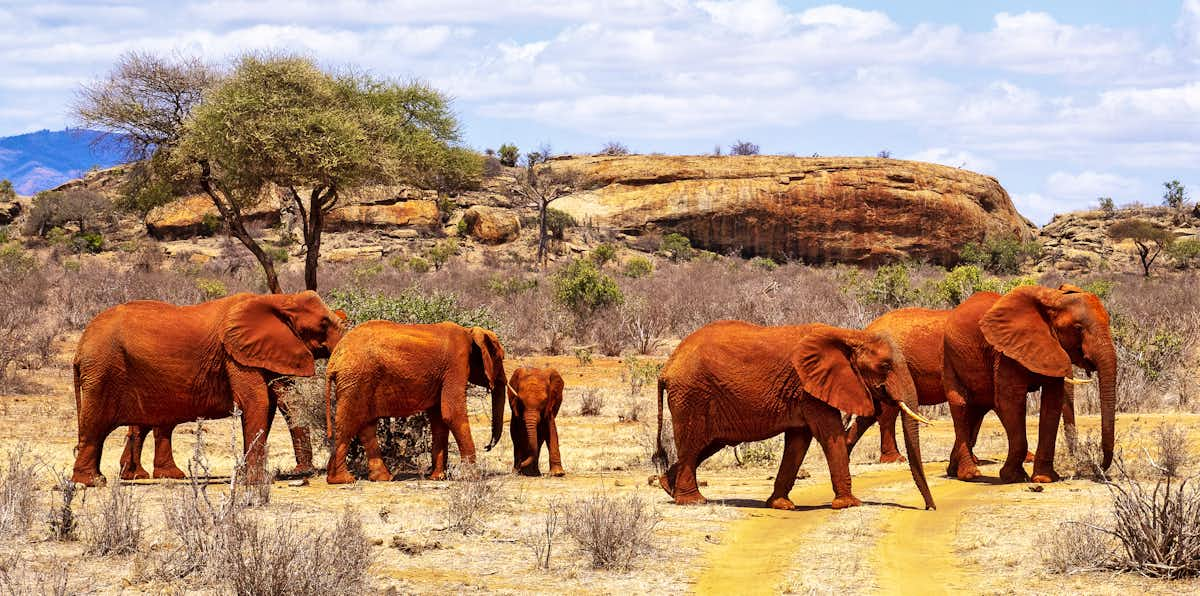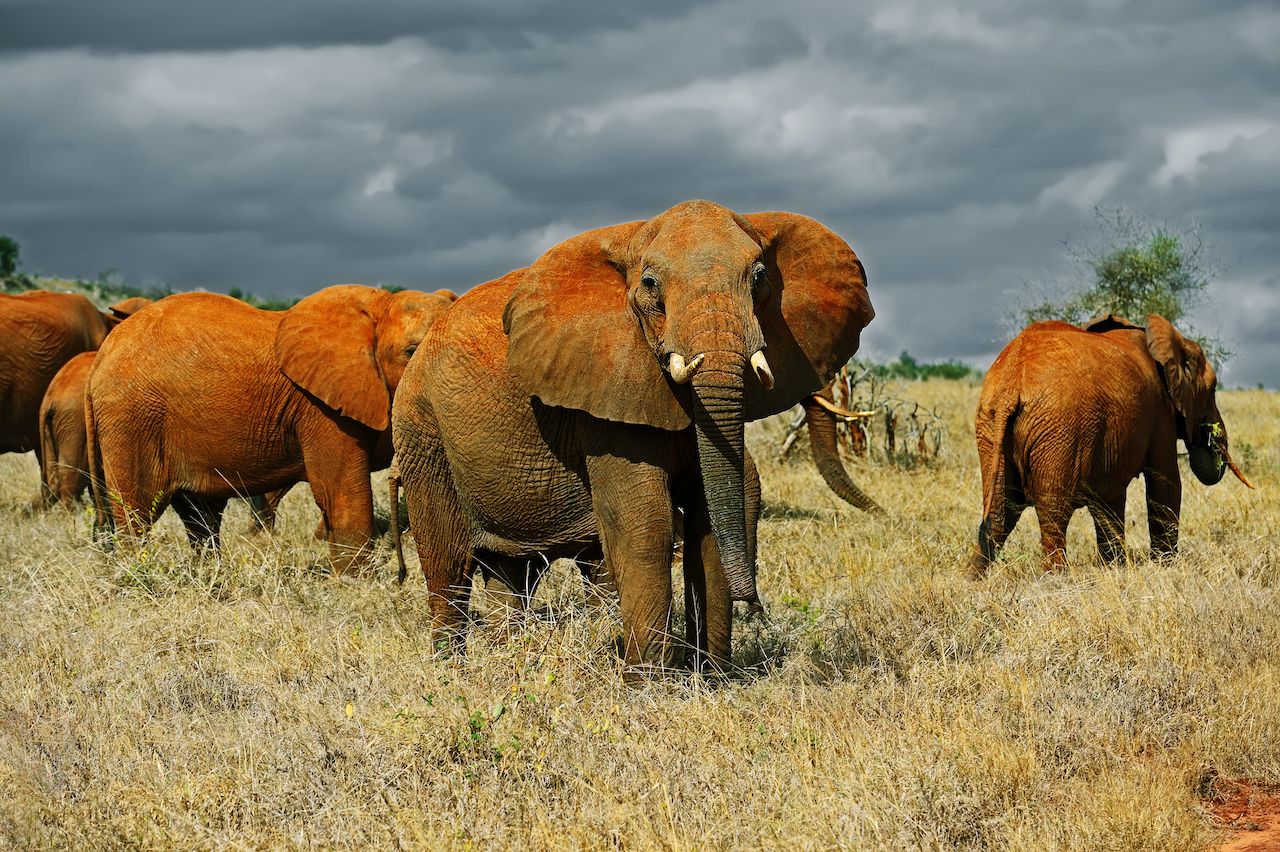Nestled in the heart of Kenya, Tsavo National Park stands as a breathtaking testament to the country’s natural wonders. Spanning over 22,000 square kilometers, this expansive sanctuary offers an unparalleled safari experience, captivating visitors with its diverse wildlife, awe-inspiring landscapes, and rich cultural heritage. In this article, we delve into the magnificence of Tsavo National Park, exploring its unique features, wildlife encounters, conservation efforts, and the unforgettable experiences awaiting adventurous souls.

Historical and Geographical Overview
Tsavo National Park, divided into Tsavo East and Tsavo West, was established in 1948 and is one of Kenya’s oldest and largest national parks. Encompassing an area roughly the size of Israel, Tsavo National Park is renowned for its dramatic landscapes, including vast savannahs, arid plains, volcanic hills, and lush oases. The park’s unique geological formations, such as the Yatta Plateau and Chyulu Hills, add an extra layer of allure.
Wildlife Encounters

Tsavo National Park is a haven for wildlife enthusiasts, offering unrivaled opportunities to witness the Big Five (elephants, lions, leopards, buffalos, and rhinoceros) in their natural habitat. The park is particularly renowned for its large elephant herds, with Tsavo being home to one of the largest elephant populations in the world. Visitors can also spot many other species, including giraffes, zebras, hippos, crocodiles, antelopes, and an astonishing array of birdlife.
Natural Marvels and Scenic Delights
Tsavo National Park is a visual feast with diverse landscapes showcasing nature’s wonders. The park’s enchanting panorama encompasses dense acacia forests, open grasslands, meandering rivers, and dramatic rock formations. Explore the mystical Mzima Springs, where crystal-clear waters gush from beneath the volcanic Chyulu Hills, creating a lush oasis teeming with hippos and fish. Embark on a journey to the Lugard Falls, a series of cascading rapids carved by the Galana River, offering a stunning display of nature’s power and beauty.
Cultural Heritage and Local Communities
Beyond its natural splendors, Tsavo National Park holds great cultural significance. The region is inhabited by diverse ethnic communities, including the Maasai, Kamba, and Taita tribes, whose ancestral ties to the land span centuries. Engaging with these communities provides a unique opportunity to learn about their traditions, customs, and sustainable practices. Visitors can partake in immersive cultural experiences, such as traditional dances, handicraft workshops, and insightful storytelling sessions.
Conservation Efforts and Ecotourism
Tsavo National Park plays a vital role in conservation efforts, protecting its rich biodiversity and promoting sustainable tourism practices. Various initiatives and organizations work tirelessly to combat poaching, habitat degradation, and human-wildlife conflicts. Visitors can actively contribute to conservation by supporting eco-friendly accommodations, responsible safari operators, and community-based projects that empower local communities and promote wildlife conservation.
Tsavo National Park is an awe-inspiring testament to Kenya’s natural heritage, offering an unforgettable safari experience filled with extraordinary encounters, breathtaking landscapes, and cultural immersion. Whether marveling at the majestic elephants, admiring the diverse ecosystems, or engaging with local communities, Tsavo National Park promises an adventure that resonates deeply with the soul. As you navigate the serene and tranquil park.
Bush Breakfasts, Picnics, and Sundowners
You are not restricted to the dining room at Tsavo East. Set up breakfast with a view of the Yatta Plateau or stop game-viewing with a picnic under a tamarind tree. In the safari vehicle’s back cool box, freshly prepared food and beverages are kept cold and ready for when you are hungry.
Later, while holding an ice-cold beverage, observe the coral sunset behind the hills from a picturesque rocky escarpment. We refer to these as sundowners in Africa.
Read: Diani Beach; A Great And Amazing Place To Visit
Bird Watching
The incredible number of bird species in Tsavo East (500+) is astounding. It contains some easily recognizable dry-country specialties, such as the magnificent Golden-breasted starling, golden pipit, and vulturine guinea fowl.
The park also serves as the Somali ostrich’s southernmost stronghold and serves as a key wintering location for migrant species from Europe.
From November through April, migratory birds can be found here.
Best Time to Visit
The dry season, which lasts from July to September and December to March, is the ideal time to visit Tsavo East.
At this time, the grass is short and the animals are driven to water sources, especially river banks, these months offer the best chances to see wildlife.
Avoiding the lengthy wet season from March to May and the short rainy season from October to November is often suggested.
During these months, access becomes more complex due to muddy roads, animal viewing is more difficult, and scheduled excursions may be impacted by severe rains.
Read:Taita Taveta wants 25% of Tsavo National Park Revenue
Staycation Places around Tsavo National Park

Galdessa Camp, a magnificent and secluded eco-lodge that overlooks the Yatta Plateau, is tucked away in a remote area of Tsavo East National Park.
10 people can stay at Galdessa Camp in 5 raised tents, each of which has a private shaded deck from where you can observe the hippos, crocodiles, and other species drawn to the Galana River’s Doum Palm-lined banks.
The proceeds from the Sheldrick Wildlife Trust’s four other opulent eco-lodges in Tsavo, in addition to Galdessa Camp, go toward protecting orphaned elephants. These are Ithumba Camp, Ithumba Private, Umani Springs, and Galdessa Little.
The lodges are private and cozy, similar to Galdessa, and some are entirely self-catered. However, a private chef is offered, and he or she will provide you with a list of foods and beverages to bring.
Satao Camp is well-liked by both visitors and wildlife. It is located in the center of the park, opposite a drinking well, amid a small green oasis of tamarind trees.
20 en-suite safari tents with private verandas are available at this mid-range resort. Each tent is elegantly designed in an “out of Africa” style that evokes the first explorers.
One of the biggest and longest-running camps in Tsavo East is Ashnil Aruba. Located along the banks of the Aruba Dam, which draws a variety of species in search of water.
At Ashnil Aruba, there are a total of 20 luxurious suites, including two rooms that can accommodate visitors with special requirements and eight interconnecting suites. Slate or polished concrete flooring keeps the rooms cool, and each has an en-suite bathroom and a private terrace that looks out onto the dam.
Let’s Go To Tsavo

Chyulu Gate in Amboseli and Mtito Andei Gate in Nairobi are the primary entry points. Tsavo Gate, which is close to Manyani, will be used by tourists from Mombasa.
Tsavo East does not have any regularly scheduled flights, however, there are a number of airstrips that can accommodate chartered flights.
Depending on traffic and road conditions, it takes about 5-7 hours to drive the 450 kilometers (280 km) to Lake Nakuru National Park.
If traveling from Nairobi, many people decide to stop here for a picnic lunch and a quick game drive.
Enjoy your stay in Tsavo National Park and Come again next time.





